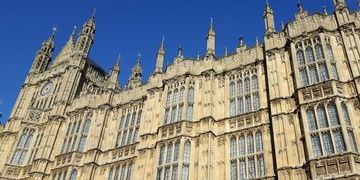We’ve taken a look at some of the new MPs taking to Westminster with a science background
New MPs with a STEMM background
20 Jan 2020
The December 2019 election saw a significant turnover of MPs, one in five MPs now gracing the Commons are doing so for the first time. Of the new intake, we’ve taken a look at those who have a STEMM background (as defined here) and found 19 parliamentarians to add to our MPs to watch list. We’ve also noted those STEMM MPs that stood down or lost their seat in the election.
Many of those with STEMM backgrounds studied a STEMM subject at university, with several having careers in research or healthcare.
Conservative MP Virginia Crosbie holds a degree in Microbiology and Immunology and went on to work at GlaxoWellcome before becoming one of the youngest directors at UBS after working as a pharmaceutical analyst. Crosbie then decided to become a Maths teacher, working at The Masbro centre from 2015. While doctors Phillip Lee and Sarah Wollaston left the house, new Conservative MPs Ben Spencer and Luke Evans are both qualified doctors. Spencer worked as a consultant psychiatrist while Evans worked as a GP. Feryal Clark, Labour MP for Enfield North, studied bioinformatics before working in diagnostic biochemistry and virology across hospitals including UCLH and Barts. Fellow Labour MP Taiwo Owatemi is a qualified pharmacist and worked in oncology in the NHS prior to her election. MP for South Ribble Katherine Fletcher graduated with a degree in Biological Anthropology.
Dean Russell, new Conservative MP for Watford studied Physics with Business Studies before embarking on a career in research. He began his career at the Council for the Central Laboratory of the Research Councils, working across the UK, US, and Europe at the Daresbury Synchrotron, BESSY Synchrotron, and the Advanced Photon Source. Three of the new intake of Conservative MPs hold degrees in Maths. Claire Coutinho, Sam Gyimah’s successor in East Surrey, Gagan Mohindra and Anthony Browne graduated from Oxford, King’s College London and Cambridge respectively. Marco Longhi, MP for Dudley North studied for a degree in aeronautical engineering in Italy before gaining a BEng in Civil Engineering from the University of Manchester. Following this, Longhi moved to Brazil to work as a Senior Field Engineer. New MP for Penistone and Stocksbridge Miriam Cates graduated with a degree in Genetics before becoming a science teacher in Sheffield.
Of course, studying for a degree in a STEMM subject isn’t the only way to forge a career in the sector. Jacob Young, MP for Redcar, completed an apprenticeship before becoming the lead technician at Chemoxy International right up until his election to parliament. Mark Jenkinson, MP for Workington, left school with a ONC in electrical and electronics engineering and has worked as a mechanical and electrical systems project engineer and then as a technical author several engineering firms. MP for Rushcliffe Ruth Edwards worked in a number of roles within cybersecurity, including for techUK and BT. Liberal Democrat MP for Twickenham Munira Wilson has worked in the health sector since 2009, working between the NHS and the private sector for Novartis and Merck UK.
The new intake of MPs represent a significant and broad spectrum of experience from the STEMM sector. We are looking forward to working with these new MPs as the new Parliamentary session swings in to full flow.
Related resources

CaSE’s comprehensive analysis of the measures that impact R&D announced in the 2025 Spending Review

A week on from the publication, Policy Manager Camilla d’Angelo takes a look at some of the questions that remain to be resolved and what to expect next for the Immigration White Paper.

CaSE’s response to the House of Lords Science, Innovation and Technology Select Committee inquiry into: Financing and Scaling UK Science and Technology: Innovation, Investment, Industry.

DSIT published plans to provide long-term public funding for certain R&D activities. Policy Officer Edmund Derby looks at what has been proposed.